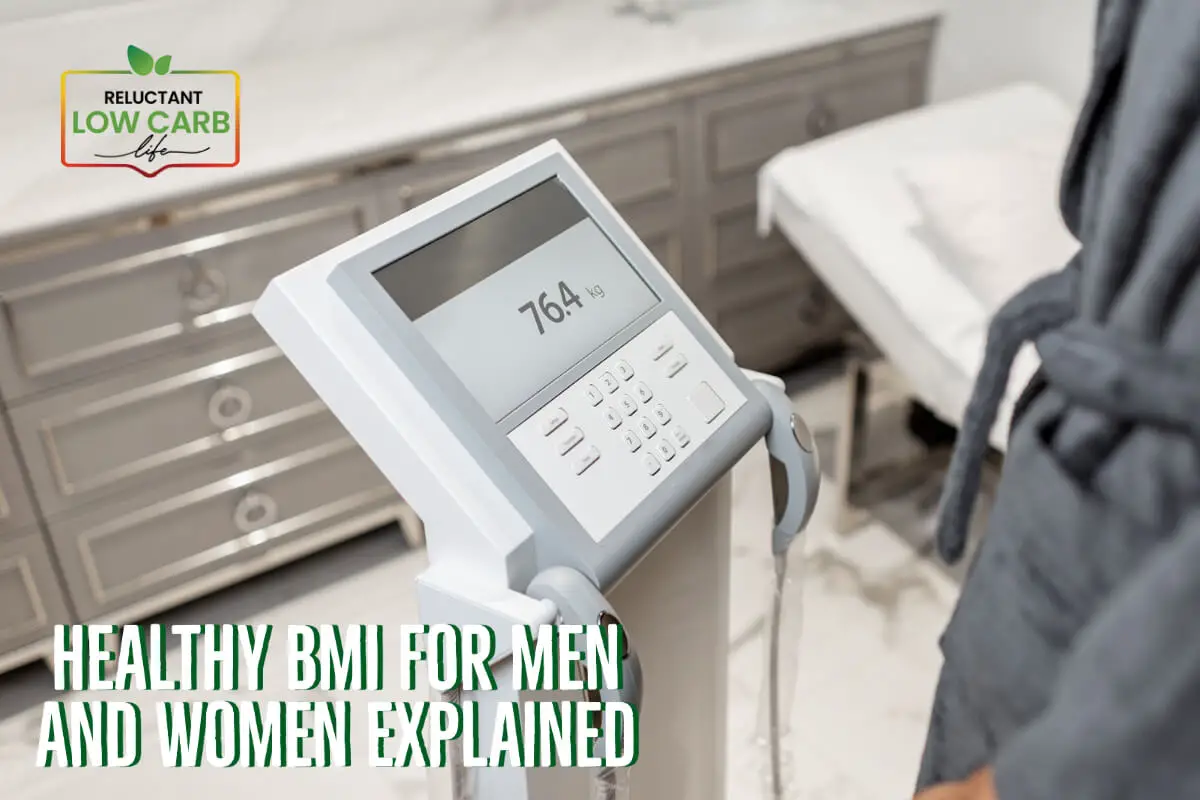When you go to your doctor, they will usually check your height and weight to give you a number known as your BMI or your Body Mass Index. Your BMI will tell you if you are underweight, a healthy weight, overweight or obese.
The BMI is known as the Body Mass Index. It is a number that most health care professionals use to determine if you are considered a healthy weight for your height and weight. BMI is not gender-based because the same chart and BMI numbers reference men and women.
Table of Contents
What Is A BMI For Men And Women?
The BMI is also known as your Body Mass Index, which is a number based on your height and weight to determine if you are of a healthy weight. The BMI is not gendered specific as it is not based on your gender but your height and weight.

The only difference in the BMI chart is that there are no different BMI charts for different genders but various charts between children and adults. The standard BMI numbers are for adults 20 years and older.
The BMI is just a guide and a tool and does not necessarily say how healthy an individual is. The BMI does not look at how much muscle you have compared to fat or how much water weight your body has.
Because of this, many feel, myself included, that though the BMI is a good guide for you, it does not tell the entire story of what is happening in your body, especially with your fat, muscle, and water weight.

To get a clear indication of your fat, muscle, and water weight, it would be good for you to try to step on a scale as In-Body, which will give you all these numbers that include your water, muscles, and fat weight in your body.
For example, someone with a lot of muscle will weigh more than someone without. For this reason, a person with a lot of muscle under the BMI method may appear overweight or even obese.

Listen To Our Podcast About What Is Body Mass Indexed? by clicking here.
Discovering More About Your Healthy BMI Numbers
For adults over 20 years old and older, the BMI is interpreted with a standard weight and height calculation. The categories do not account for different body types, ages, or even gender.
The numbers are all the same for basically everyone who is over 20 years of age. Here are what your BMI number means:
| BMI Number | Health Status |
| Below 18.5 | Underweight |
| 18.5 to 24.9 | Healthy Weight |
| 25.0 to 29.9 | Overweight |
| 30.0 and Above | Obese |
For example, if someone is 5’ 9” according to their weight, they will have a different type of BMI status category. It is important to note that whether you are male or female does not matter.
What matters is your height and weight for your BMI, not your gender. Here is an example of the weights for each category if you are 5’9”.
Male Or Female’s BMI If They Are 5’9” Tall And The Corresponding Weight
| Weight Range | BMI | BMI Category |
| 124 lbs or less | 18.4 or below | Underweight |
| 125 lbs to 168 lbs | 18.5 to 24.3 | Healthy Weight |
| 169 lbs to 202 lbs | 25.0 to 29.9 | Overweight |
| 203 Ibs or more | 30 or higher | Obese |
As you can see from this chart, a person of the same height’s BMI will increase or decrease if they gain or lose weight. The BMI measurements are based solely on height and weight calculations.
A problem with the BMI calculations for most people is that the BMI numbers do not consider if you are gaining or losing muscle weight. And because of this, if someone has a lot of muscle weight, it may be very difficult or almost impossible for them to reach the healthy weight category for the BMI scale.
That is why with the BMI, it is also essential to look at not just the BMI numbers but also other factors such as your fat and muscle mass and overall health.
Because of this, we love a scale known as In Body. The in-scale measures not only your BMI but also will tell you your muscle weight vs. fat weight. If you have a lot of muscle weight, your BMI number may always show you as unhealthy when you are very healthy.
That is why the BMI numbers should be a guide to help you determine your ideal weight.
Reluctant Low Carb Life explores all aspects of keto and low-carb lifestyle, fitness, health, wellness, and aging gracefully. At the Reluctant Low Carb Life, we strive to give honest and accurate information to people trying to live the low-carb and keto lifestyle while improving their fitness and health.
We have a free monthly newsletter that is filled with information and helps you remain updated. Subscribe to the Reluctant Low Carb Life newsletter by clicking here.
Listen to our weekly podcast, Reluctant Low Carb Life, on all the major podcast platforms by clicking here.
Follow us on Instagram and Facebook by clicking here.
Related Question
Is It Possible To Have A Healthy Lifestyle In The Modern World?
Many of our ancestors lived in a time when it was much easier for them to have a healthy lifestyle as they were not surrounded by as much junk food or bad food. Many could make better lifestyle and food choices than we do today.
You can read more about Is It Possible To Have A Healthy Lifestyle In The Modern World? by clicking here.
Why It Is So Important To Maintain A Healthy Lifestyle?
We can all choose to maintain and keep a healthy lifestyle. There are many reasons why this is important, but one of them is that we will live a more prosperous and full life if we choose to maintain and keep a healthy lifestyle.
You can read more about Why It Is So Important To Maintain A Healthy Lifestyle? by clicking here.








